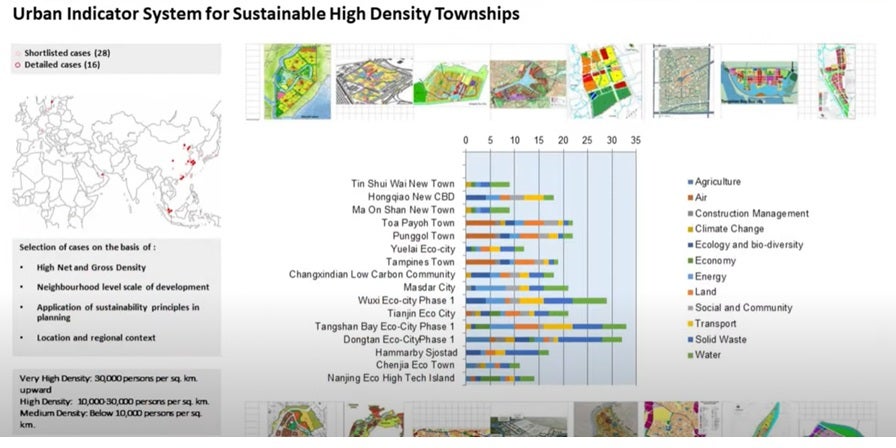Urban Indicator System for Sustainable High Density Township Projects
Principal Investigators: Dr Lai Choo MALONE-LEE, Prof HENG Chye Kiang
Background
The 2006 revision of the UN World Population Prospects highlighted that based on medium range projections, the world population will be 9.2 billion by the year 2050. Most of the projected population growth will be in the developing cities of Asia and Africa. Today, already over 50% of the world’s population resides in urban areas. Cities in Asia are urbanizing at a faster rate than cities in other parts of the world, and much of this urbanization is happening in already very dense urban centers. Scholars studying this situation have highlighted that the high rate of urbanization would put extreme pressures on existing resources and give rise to severe environmental problems if not duly addressed. The potential problems would include housing and employment shortage, strained urban infrastructure, traffic congestion, urban pollution, as well as energy, food and water security issues. Such problems would be coupled with social concerns such as poor public health, increasing crime rates, erosion of neighborliness, loss of heritage and culturally rich areas, and related concerns.
Increasingly, city governments, planners, developers and other stakeholders have to begin to think of new planning and strategies in the context of township projects that can be planned upfront to address some, if not, all of these problems. Given the population pressures and land constraints, it is envisaged that such townships would have to be of increasingly higher densities. The research questions are: In such high density situations, how can we ensure that residents would still enjoy healthy and conducive living environments? How can we plan, design and implement these townships so that they are sustainable socially, environmentally as well as economically?
In this research project, we envisage a hypothetical township of 100,000 populations on sites of around 1 sq km, and seek to develop relevant urban indicators to support the planning and design process. The ultimate aim is to ensure high levels of sustainability and livability. Given that there are few, if any, townships of such size currently in the world, it is necessary to develop such an indicator system from “first principle”. Nonetheless, the research will draw upon the experiences of projects in other cities of different density profiles to develop the relevant principles and indicator sets.
Objectives
The main objectives of this research are to:
1. Explore and analyze existing relevant international case studies on sustainable and livable townships
2. Distill principles for sustainable and livable townships for application in dense environments
3. Develop an urban indicator system that can support the planning, design and implementation of such townships in the dense cities of Asia.



